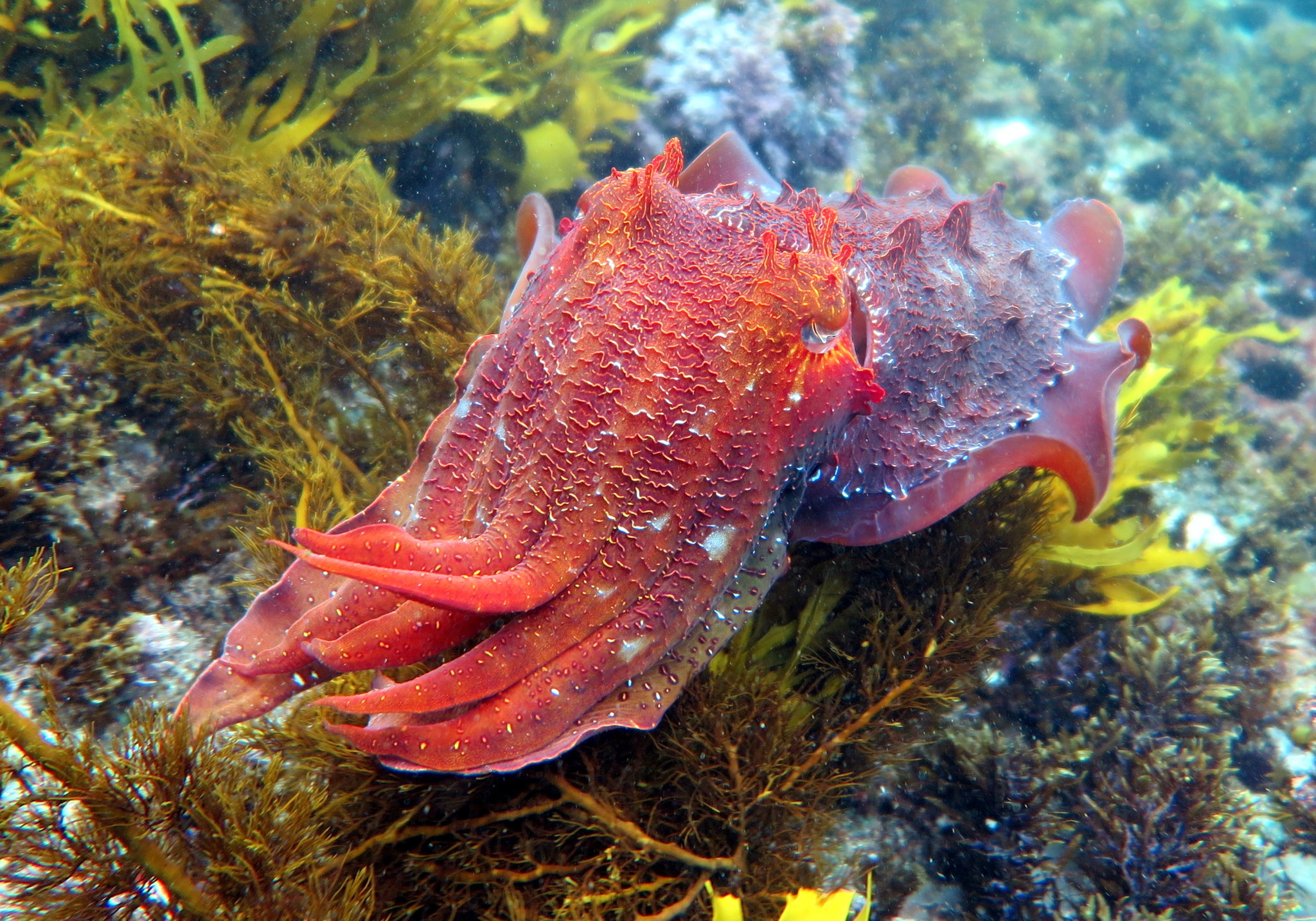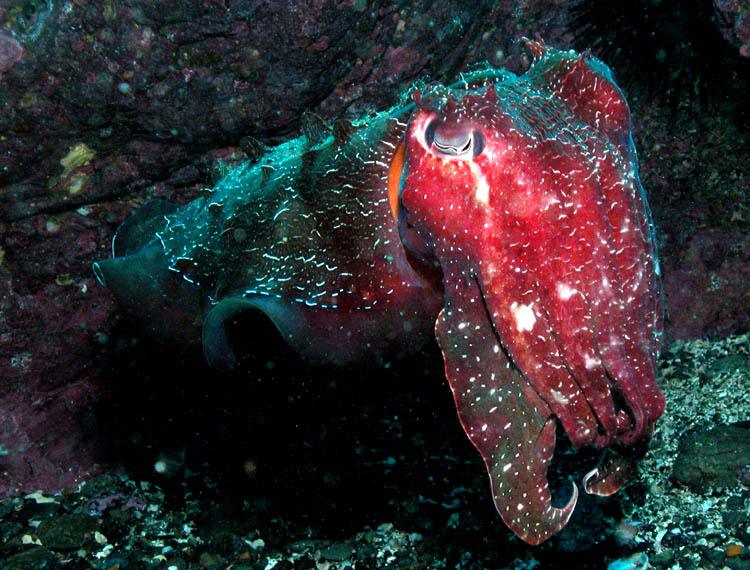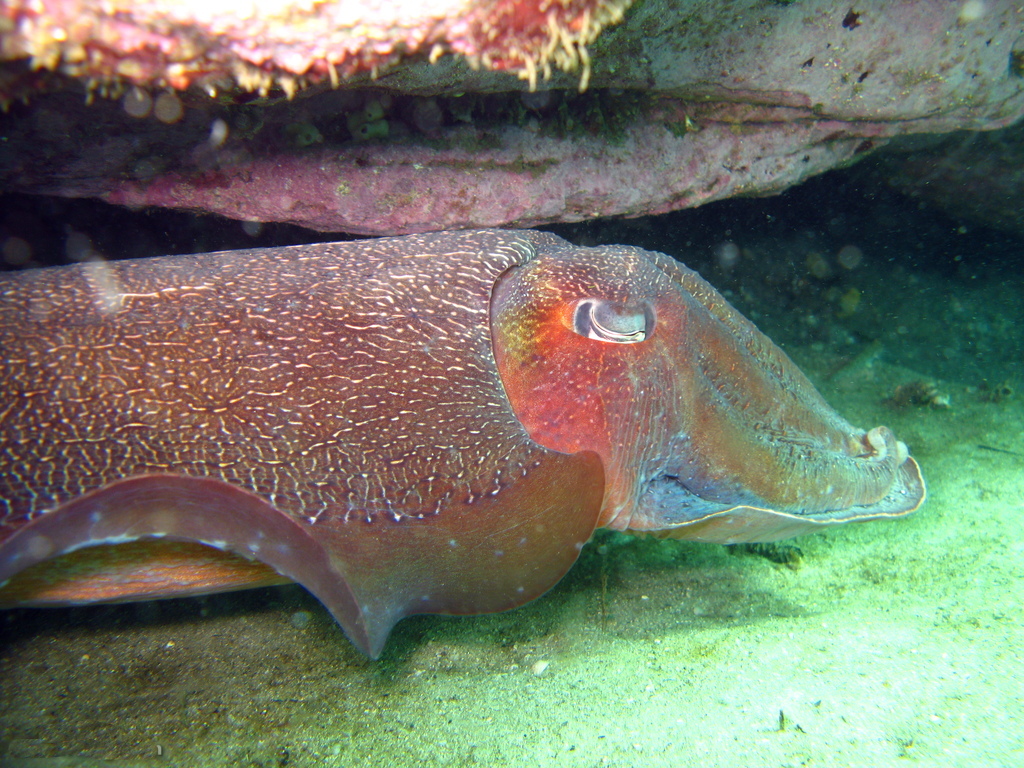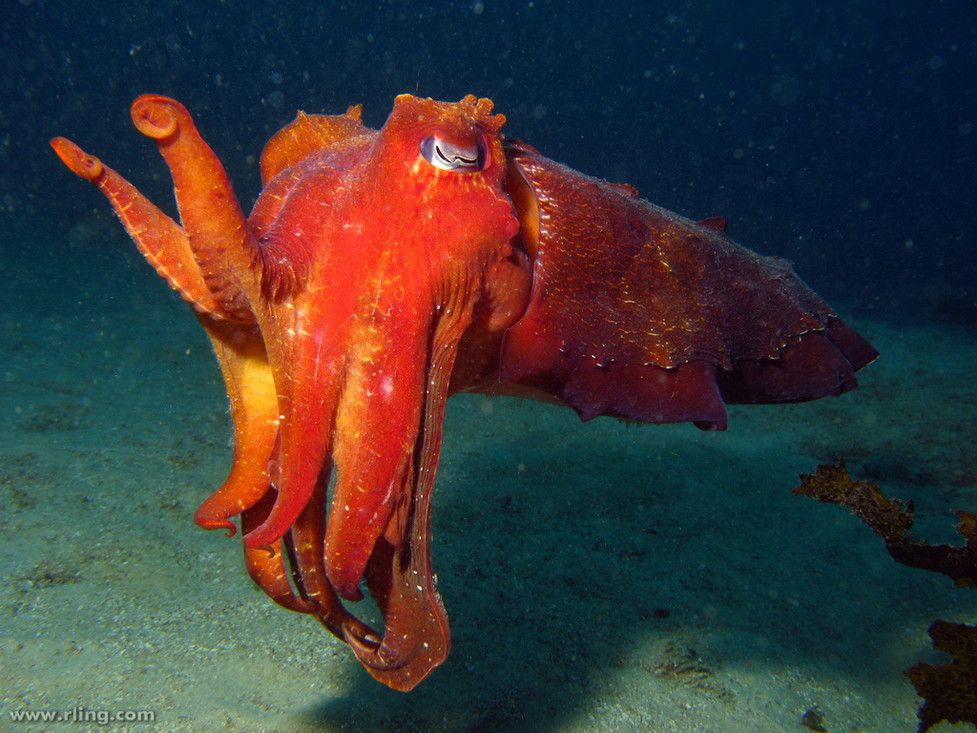
Sepia apama Giant Cuttle
The giant cuttlefish (Sepia apama) is a species of cuttlefish known for its large size and distinctive appearance. They can grow up to 20 inches (50 cm) in length and weigh up to 2.2 pounds (1 kg). The giant cuttlefish has a wide and flat body, with a unique internal shell called a cuttlebone. Its skin is covered in small, raised bumps and has.

Sepia apama (Seiche géante australienne)
Sepia officinalis is a marine organism, categorized as a "shallow water cephalopod", dwelling in sandy or muddy substrates. Its habitat ranges from subtidal waters to depths of 200 meters. Members of this species follow seasonal migrations.

Sepia apama Giant Cuttle
Sepia apama Weight 11 kg lbs Length 50 cm inch Giant cuttlefish also known as the Australian giant cuttlefish (scientific name Sepia apama ), is the world's largest cuttlefish species, growing to 50 cm (20 in) in mantle length and over 10.5 kg (23 lb) in weight.

Sepia apama Giant Cuttle
Sepia apama, also known as the giant cuttlefish and Australian giant cuttlefish, is the world's largest cuttlefish species, growing to 50 cm in mantle length and over 10.5 kg (23 lb) in weight. Using cells known as chromatophores, the cuttlefish can put on spectacular displays, changing color in an instant.

Giant Australian Cuttlefish (Sepia apama) Tomahawk, Tasmania
Giant Cuttlefish The annual migration of the Australian Giant Cuttlefish 'Sepia apama' is one of the most spectacular natural events in the Australian marine environment. This natural wonder attracts international film crews, renowned underwater photographers, divers, researchers and journalists to dive and snorkel to experience the aggregation from May to August which is unique in the.

Sepia apama Giant Cuttle
Sepia apama, known as the Australian giant cuttlefish, derives its common name from its geographical origin and nativity, Australia.

Sepia Apama The Pinnacle (Brush Island) Tony brown, Sea animals
The Australian giant cuttlefish, Sepia apama, is the largest cuttlefish in the world and aggregates in the cold waters off Point Lowly, Whyalla, South Australia.The annual event, commencing in May through to July, brings hundreds of thousands of cuttlefish in search of a mate to the waters off Point Lowly - the only place in the world the cuttlefish aggregate in such large numbers.

Sepia Apamagiant australian cuttlefish
Depending on the species, cuttlefish range in length from 1.7 to 20 inches. The largest species is the giant cuttlefish (Sepia apama), which can reach 20 inches in mantle length and weigh over 23.

Australian Giant Cuttlefish (Sepia apama) Australian Animals
giant cuttlefish, also known as the Australian giant cuttlefish (scientific name Sepia apama [3] is the world's largest cuttlefish species, growing to 50 cm (20 in) in length and up to 100 cm (39 in) in total length (total length meaning the whole length of the body including outstretched tentacles). They can be over 10.5 kg (23 lb) in weight.

Australian Giant Cuttlefish (Sepia apama) « Australian Animals
Sepia apama spawn from April to September, with a peak spawning period of May-June. Spectacular mass spawning occurs in the Spencer Gulf where thousands of Giant Cuttlefish congregate in relatively small patches of rocky reefs. Feeding and diet. As like other cuttlefish S. apama feeds on fishes, crabs and other crustaceans. Other behaviours and.

Giant cuttlefish Sepia apama HD YouTube
Anatomy Cephalopod literally means "head foot" in Greek, a reference to the way the cephalopod's head connects to its many arms. The basic cephalopod body plan includes two eyes, a mantle, a funnel (also called a siphon), and at least eight arms.

Sepia apama Giant Cuttle
Most abundant and by far the largest local species of cuttlefish. The species can usually be recognised by the raised skin flaps, and it has three flat skin folds behind each eye. Mature animals are often curious to the point of aggressively approaching and confronting divers. The cuttlebone of this species is broad with a small spine and has a white-grey upper surface, in contrast to the pink.

Гигантская австралийская каракатица (лат. Sepia apama)
Each winter from May to August, thousands of Australian giant cuttlefish ( Sepia apama) make their way to False Bay, northwest of Adelaide along the coast of South Australia.

Sepia apama Giant cuttle Reef Life Survey
Giant Cuttlefish - The Australian Museum. Banded Morwong, (Hutton, 1872) Cosmopolitan Rubyfish, Plagiogeneion rubiginosum (Hutton, 1875) Thetis Fish, Neosebastes thetidis (Waite, 1899) Gelatinous Blindfish, Aphyonus gelatinosus Günther, 1878. Leaf Scorpionfish, Taenianotus triacanthus Lacépède, 1802. Pastel-green Wrasse, Halichoeres.

Sepia apama Natuurwijzer
The scientific name for this species of cuttlefish is "Sepia apama". Description Here is a brief description of these cuttlefishes. Mantle length: The mantle length of these fishes can go up to 50 centimeters. Weight: They can weigh up to 10.5 kilograms. Head: Giant cuttlefish has a big, flat and broad head with two large eyes.

Sepia apama Giant Cuttle
This Aussie cuttlefish is the largest cuttlefish species in the world. Individuals in excess of 5 kg are not uncommon. Every year, from May to August, hundreds of thousands of giant cuttlefish gather in one place to spawn; much to the delight of scientists and divers. The location? Whyalla, a city in south Australia.